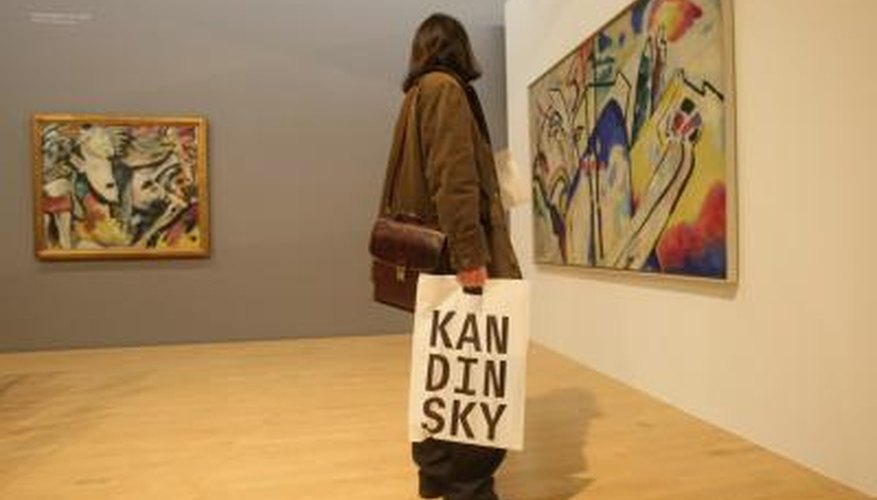Wassily Wasilyevitch Kandinsky was born on Dec. 16, 1866, in Moscow. He was brought up in Odessa, where his father ran a tea factory and studied law at Moscow University, where he later became a professor. In 1896, after visiting an exhibition of French Impressionists, Kandinsky decided to become a full-time painter. He left Russia for Munich and studied art with Frank Stuck. He then spent five years travelling round Europe, painting, exhibiting and discovering colours, techniques and materials. Kandinsky became a key player in the evolution of abstract paintings.
A Study
At the Guggenheim Museum in New York City, an in-depth study of Kandinsky's techniques and materials was carried out by senior conservator Gillian McMillan. The findings appeared in the catalogue for a major Kandinsky exhibition that celebrated the museum's 50th anniversary. Along with fellow conservators, samples of six iconic Kandinsky paintings were taken and analysed. X-rays were used to determine the materials and binding media Kandinsky employed.
- At the Guggenheim Museum in New York City, an in-depth study of Kandinsky's techniques and materials was carried out by senior conservator Gillian McMillan.
1896-1914
Kandinsky's early works were landscapes based on spots and lines of colour. He painted with oils, either on canvas or cardboard, but he also used gouache ("Song" 1906) or tempera on cardboard ("Arab City" 1905). In 1911, he established a group called Blue Rider in which, according to the artist, "the accent was made on revealing associative properties of colour, line and composition." An example of this period, Composition VII, is on display at the Moscow State Tretyakov Gallery, and is oil on canvas.
- Kandinsky's early works were landscapes based on spots and lines of colour.
- An example of this period, Composition VII, is on display at the Moscow State Tretyakov Gallery, and is oil on canvas.
1914-1921
When World War II broke out, Kandinsky was forced to leave Germany and return to Moscow. He worked with the People's Committee of Education and as professor of art he designed a special curriculum based on colour and form. He diversified into watercolours ("Bagatellen" 1916) and even painted on glass ("Two Girls" 1917) but by 1921, socialist ideals forced him to leave Russia and his art was banned.
1922-1944
Kandinsky returned to Germany and joined the Bauhaus movement. He introduced geometrical designs and circles into his work, ("Compositions VIII" 1923) but most frequently painted with oils onto canvas or cardboard. In 1931, the Nazi party declared his paintings "degenerate" and he was forced to move to Paris. Kandinsky was isolated in Paris and his paintings reflected this. Instead of primary colours his palette became subdued and chaotic designs became geometric. His favourite materials continued to be oil on canvas or cardboard.
- Kandinsky returned to Germany and joined the Bauhaus movement.
- He introduced geometrical designs and circles into his work, ("Compositions VIII" 1923) but most frequently painted with oils onto canvas or cardboard.
